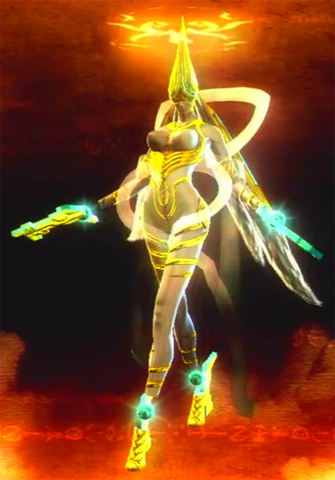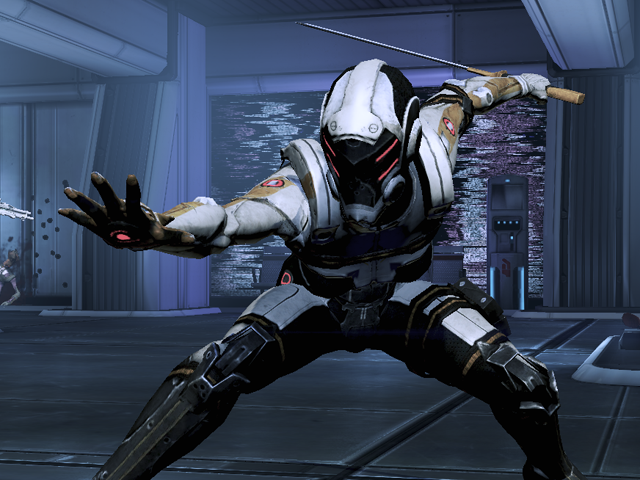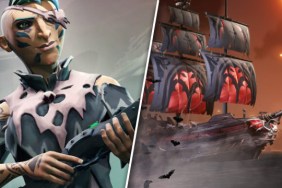A treatise on diversifying your enemy ranks.
Picture it: The vault hunters enter yet another bandit den amidst the anarchic lands. As they let bullets and abilities fly, psychos swarm the area. A woman’s voice screams, “Burn the flesh! Salt the wound!” She is quickly followed by another and another, but the voices are not homogeneous. Both men and women are entering the fray, attempting to take down the hunters as they careen down a singular vector, axes in hand and murder in their minds. Parity among the genders has been achieved on Pandora, yet as soon as their HR department congratulates itself, it realizes all the paperwork it’ll need to file.
This ambitious vision, though penned by my hand, was inspired by Anthony Burch’s words at the recent Gearbox panel at GaymerX2 this past weekend. He expressed a firm interest in introducing female enemies into Borderlands and achieving parity, but he also questioned how the audience would feel about such a feature. Would it be progressive to let players murder countless women as they have countless men? The answer is yes, but that doesn’t mean it isn’t without its caveats. Just as there are problems with the female protagonists in video game narratives, the potential for misogyny in making them antagonists is strong, especially if they become nameless clones like we’re used to.
Our fearless leader, Nick Tan, wrote previously about the idea of female enemies on real-life statistics and physical embodiments, and a postulation about the simulated murder of nothing but women in a game. His essay breaks the ground, in a sense, for us to drill down further into the concept where we not only answer the why but also the how.
Putting chivalry and reality aside, in a fantasy game of which all games with a fictional story belong, there is not much reason to exclude women as faceless, meaningless enemies. Although Katherine Cross speaks primarily of aptly written female villains with regards to a game narrative, I feel that this quote equally applies to the, well, less dynamic enemies:
The fact is that video games and most popular media, do not portray realistic divisions between women and men, particularly in mindless action blockbusters. But while we call for strongly written female characters (note the distinction from “strong female characters”), simply filling a narrative isn’t the only step to progressing our medium of choice forward if the population outside of the main script is purely male. The message that sends is actually confusing: From a world teeming with bountiful crops of men ready to sacrifice themselves, every woman among them (all three or four) has been filtered out and made an example in some way.
If women are included at all, they are not allowed to not be dynamic and interesting. All women must be front and center for the story for fear of poorly representing them. Good or evil, this kind of thinking, though generally unintentional, also places women on a false pedestal, but this is also because of what uninteresting women often become in games: background decoration. If a woman is not present in the narrative, she is often, not always, just present for show. So I say, the middle ground is to give her a gun or a sword and send her into battle. Round out your forces and your female characters.

When Anthony Burch posed his question to the audience, one notable voice spoke up, that of Zoë Quinn, developer of Depression Quest. She brought up the valid point that while including women among enemy ranks is important, one folly that should be avoided at all costs is to sexualize them. We’ve heard countless times before, particularly in Japanese games and animation, the cries of pain that sound oddly aroused. (I certainly did during my run through Deception IV.)
Also, as Nick expressed, a good amount of female enemies are succubi, vixens, witches, and female assassins. It is dangerous to create a power fantasy where women who are dressed in revealing clothing, who are partially or completely exposed, or who are sexually active are by nature adversarial. This exacerbates the already problematic depiction of one-dimensional sexually-motivated female characters by perpetuating the idea that a woman who enjoys sex is the enemy if she’s not only there to be seen/consumed.
What’s important when implementing your perfect enemy blend is not to include enemy types which are solely female. There are two main reasons for this. First, by having separate divisions of male enemies and female enemies, you perpetuate the stereotype that specific roles belong to specific genders. This contradicts the whole fiction/fantasy/unreal vibe of your narrative unless it’s absolutely vital to it, such as the Banshees in Mass Effect 3.
Next, introducing female enemy types invites players to form specific methods of destroying them, whether by design or by chance. Creating scenarios where dispatching women involves different gameplay mechanisms than men sends a subconscious message about gender divisions – women are to be “dealt with” differently than men in all cases. Although ME3 made sense to include Banshees as female-presented enemies, the Snipers and Nemeses are tired examples of female enemies who are lithe and agile, as if no woman Cerberus sends into battle has a stocky, muscular build.
OK, so you’re ready to make all your enemy classes replete with equal divisions of men and women. Here’s one more concept to consider. Don’t rely on exaggerated gender signifiers to differentiate them from the men. You run the risk of the Ms. Male Character trope creeping up on your enemies. The fact is that female soldiers can wear the same armor as your men; they don’t need boob windows, steel thongs, or other silliness in their outfits. Female sorceresses don’t need robes revealing their endlessly long legs and dark lipstick across their mouths. The fact is that they’ll often do fine with slightly adjusted faces and haircuts, and of course, form-fitting outfits can reveal breast shape, but vary your cup sizes for goodness’ sake.
What about the psychos? That’s how we started the conversation, after all. Like the current versions, they can wear the same face mask and sport the same bald heads. Their musculature can probably also remain similar—women come in a variety of shapes, so there’s no reason they can’t use the same body models. As for the whole shirtless thing, just give them a shirt. At this point, I’m assuming you can figure out how to do something that simple, but we’ll see.

Increasing the number of women in games is important across all character types—hero, villain, NPC, and enemy alike. The more there are, the more diverse and interesting they can be, and game writers can find ways to avoid the tropes that currently propagate the industry. Although it’ll take some effort to get right, avoiding the idea completely, especially with regardless to hordes of enemies, only serves to maintain the status quo.
Images obtained from the official Borderlands website, the Mass Effect Wiki, the The Witcher Wiki, and the Bayonetta Wiki respectively.











